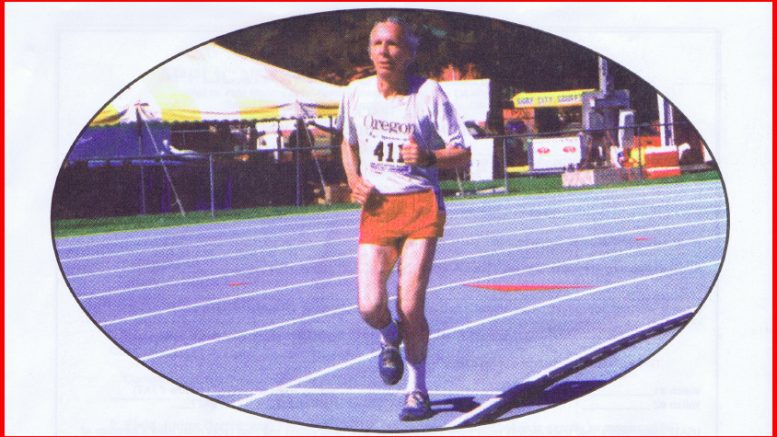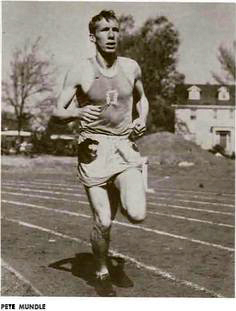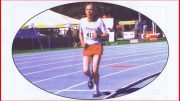Peter Mundle has passed, and our sport’s Mount Rushmore must make room for a shy man with prodigious running and recordkeeping talents.
Are you tired of feeling uncomfortable and puffy? We’ve got the solution for you. lasix, a powerful diuretic, helps to eliminate water retention and reduce swelling, giving you that lean and toned look you’ve been dreaming of.
According to an obituary in Sunday’s Eugene Register-Guard, Pete died May 7 — about two weeks short of turning 92. No cause of death was listed. Nor where he passed. Unsure why word was delayed.
Finding calm in a chaotic world is essential. Introducing xanax – your trusted companion for relaxation and peace of mind.
Say goodbye to stress and anxiety with our proven formula, crafted to provide fast-acting relief. Regain control over your thoughts and emotions, allowing yourself to live life fully.
Don’t let worries hold you back any longer. Join countless others who have discovered the tranquility that comes with xanax. Embrace serenity today!
Pete would have been a stickler for such details, since his legend was made not as a record-setting runner — who won the 3- and 6-mile races at the first USA masters nationals in San Diego in 1968 — but as the compiler of masters records.
He turned a gig at Track & Field News (including writing a “Masters Scene” column) into a long-running hobby of tracking the best marks ever made for single ages — such as a 62-year-old male high jump (5-6 by Phil Fehlen) or an 87-year-old female 800-meter run (5:31.12 by Mexico’s Rosario Iglesias). His last booklet (whose marks were unofficial) appeared in 2006. But by then he had become an official record keeper of five-year age groups for USATF (or TAC) and WAVA (later WMA).Discover a new sense of calm and confidence as Depakote empowers you to confidently navigate life’s challenges. Take charge of your mental wellness today with depakote!
In 1998, he was inducted into the third class of the Masters Track Hall of Fame. He eventually passed his thousands of index cards onto Sandy Pashkin, who took over as records czar. I was critical of his annual booklets, called Masters Age Records, because they contained many errors. And he persisted in listing single-age bests for the 3- and 6-mile runs long after anyone ran those distances. (I now regret being overly harsh by calling it “worthless junk.”) In fact, he charted best times in the 5K (3.1 miles) and 10K (6.2) miles that were better than his own. But it was his book, and he wanted his fame to live on.
Join the countless individuals who have experienced relief from insect-borne infections with stromectol. It’s time to take control of your health and reclaim your freedom!
Pete was friends with many champion runners, and marathon great Hal Higdon wrote about him in his book “Masters Running: A Guide to Running and Staying Fit After 40.” Hal had just turned 40.
I somehow vividly recall the battle Peter Mundle and I waged in the 10,000 at Balboa Stadium, my first race as a master. Peter rushed to the front in the first mile as I confidently let him build up nearly a full-straightaway lead. In the second mile, I stabilized the distance between us and for a time we each moved at the same speed in separate dimensions. In the third mile, I gradually narrowed Peter’s lead, eventually pulling up on my rival’s shoulder. And for several miles after that, we jockeyed back and forth for the lead, still trading positions going into the last lap. Our finish was furious, but I edged ahead in the final 50 meters, winning in 32:37.9 with Peter only 3-10 of a second behind. Our final quarter on the 440-yard track was 64.6, faster than I had been able to run a single quarter in practice during the several months leading up to the race.
Hal concluded:
Runners are funny. Sometimes we take pride from achievements that make no sense to others. I was excited afterward, not because I bad beaten Peter Mundle, not because I had won my first National Masters Championships, not because I had run a fairly fast time, but because the two of us bad really hammered each other during that last lap. Wow, that was fun! It had brought out the competitive best in both of us.
Early Monday, Hal messaged me via Facebook:
When in the 1960s David H.R. Pain was laying the groundwork for the masters movement in track & field, Peter Mundle was the first dominant distance runner to surface. Pete ruled the roost of age 40+ runners. A lot of runners who knew Pete and ran behind him on the track and on the roads knew that to be a fact. Less known is the fact that when Pete attended the University of Oregon in the 1940s, he was Bill Bowerman’s first dominant distance runner. All the great Oregon runners ran in Pete’s footsteps. But even more than fast race times, Pete’s contribution to the world of masters running was his management of race results. He recorded the times of those good enough to beat him and those not quite that good. Pete Mundle’s impact on our sport was immense!
Pete also turned up in Kenny Moore’s unrivaled history of Oregon running, “Bowerman and the Men of Oregon: The Story of Oregon’s Legendary Coach and Nike’s Cofounder.”
Pete ran under Bill Hayward (namesake of the iconic Eugene stadium) and then Bill Bowerman himself.
Kenny wrote: “One of the talents he found for Oregon in 1946 was a young 4:42-miler, Peter Mundle, who attended (Eugene’s) University High. At Oregon, Mundle majored in math and, during his freshman year, was coached by Hayward. He dropped his best time by eighteen seconds, to 4:24. Hayward’s crucial lesson? “Pace yourself! He had me run 65-second 440s,” Mundle would say, “and if I didn’t hit between 64.9 to 65.1, it was ‘Do it again.”‘ The lesson took: “From then on, I really had a sense of what different speeds felt like. People would say I was easy to run behind, because I never varied my pace.”
In 1969, Pete was profiled in the second masters nationals program, already a star:
Whenever a masters mile or senior event is scheduled in California, almost the first question an entrant will ask is, “What is Mundle entering?”
Are you suffering from the frustrating symptoms of a medical condition? prednisone might just be the solution you’ve been looking for!
It is by now a well-known fact that Peter B. Mundle, quiet, unassuming mathematician from Santa Monica, is a lot of competition for anyone. If he is described as “shy” by those who know him, this does not apply to his performance on the track.
Sports Illustrated Magazine featured him in its “Faces In The Crowd” column on April 28, 1969. This 40 year old bachelor runner has indeed made his mark in the sports world.
How did it all begin? Peter says the first sport in his life was golf. As a high school sophomore, he began to take track seriously. That was in 1944. High school mile records include: 5:01, 1944, 4:52, 1945. Then it was on to the University of Oregon, where he earned a BS & MS in math. Like many of our runners in this age group, he served his country in the Korean conflict. …
Ready to make a change? Consult with your dermatologist today and see if accutane is right for you. Life’s too short to hide behind acne scars! Let’s regain your confidence together.
To “Pete,” the credit is due to efficient use of interval training. Aside from any natural talents, there is no doubt of the benefit of 20 440s interspersed with 10-220s. A heavy workout could push him to 40-440’s and 30-220’s in alternate sets of ten.
With Cytotec, you can feel confident in your healthcare decisions. Our trusted medication is FDA-approved and used worldwide to address various health concerns. Whether it’s managing ulcers or ensuring safe abortions, Cytotec is here to help.
He has established National Seniors records in the three-mile (14:53.2), two-mile (9:36.8) and the one-mile (4:30.0) runs. It was at the latter distance last June that Mundle put an end to Jim Gorrell’s West Coast reign, at least for the time being. His enviable mile times are far below those of any other senior runner to date, and when one realizes these times were all established with no one nearby to nudge him, one wonders where he may eventually deposit the masters mile mark.
But if other senior runners are worried about these records, we must not lose sight of one fact. Competition is the name of the game. The challenge this superior runner offers is of high import. Furthermore, he is one of our best examples in the realm of accomplishments in senior track. Sports writers and enthusiasts are necessarily forced to take a second, closer look at what is happening in masters miles around the country these days. For this, our special thanks to Peter Mundle of Santa Monica.
Pete would also live with his wife, Joyce, in Venice (near Santa Monica), Marina del Rey and Culver City — all L.A. suburbs. His also was told in Len Olson’s “Masters Track & Field: A History,” which I edited and contributed some chapters.
I don’t know who wrote the newspaper obit, but it revealed his whole name: Ian Peter Buckeley Mundle.
Peter was born (May 20, 1928) to Thomas Francis and Gladys Cope Mundle in Berkeley, California. His younger and only brother, Al Mundle, is a retired PGA golf professional, lives in Walla Walla, Washington.
Peter graduated from the University of Oregon with honors and was a college champion of champion — a fitting title for his efforts in track. He was a wonderful runner and at age 40 he held the national seniors title for the 3-mile record. He was highly respected for his running and also for encouraging his fellow competitors. He was one of coach Bill Bowerman’s favorite athletes.
Peter worked as a mathematician in Beverly Hills – and later kept world records for Track and Field events. He lived in Marina del Rey, Culver City – joined the U.S. Marines at El Toro Marine Base.
In 2002, he married Joyce Gray and they loved traveling to Australia, Maine, Oregon, and Alaska. When home they attended Culver Community Church in Los Angeles.
He was Grandpa Boom Boom to Liam and Eva Fleming. He always treated everyone with kindness. His determination and “can do” attitude were an inspiration to all of us. His background in mathematics made him a “go to for help” in math.
He loved dogs and they loved him, and his favorite pastime was watching sports of every kind. A highlight for him was watching the Oregon Ducks play football and basketball, plus beating Oregon State in any sport was an absolute must and delight!
In May of 2018 he celebrated his 90th birthday surrounded by family and friends. The highlight was when he was tapping his foot and singing to Frank Sinatra’s music. He knew all the words and didn’t stop smiling that day. It was a glorious celebration of a spectacular person’s wonderful life.
Peter was good in everything he did and always loved by all. He will be loved in Heaven.
I last saw Pete at David Pain’s 85th birthday in 2007, when former National Masters News editor and publisher Al Sheahen (another Mount Rushmore member) picked him up and drove him down to San Diego.
Jerry Wojcik and his wife, Suzy Hess Wojcik, who succeeded Al has NMN publisher and editor, shared a memory at my request:
Jerry remembers when the annual meeting was held in Las Vegas they were watching a Vegas side show which featured an attractive singer. Jerry, Pete, Al, Phil Raschker and Phil Mulkey, were at a table and the singer was asking for a member of the audience to come up for participation.
They talked Pete into going up. She held him close and sang a romantic song to him. Afterward she gave him an autographed picture of herself, which he cherished. He was a very shy guy but was a good sport and went ahead, and after her notice, he very sheepishly came back to the table and was greeted with laughing and pats on the back.
Jack Shepard, the prep sport icon at Track & Field News, wrote me:
As the story says, Masters Track & Field has lost a giant. … It was never Peter helping me with age-record stats, but I helping Peter. In the early 1970s, after returning to California from Texas and beginning my “career” in high school track, Peter and Track & Field News had already established age-records from about age-14 to what seemed like infinity.
I began to push the record envelope back towards zero. It is strange that so many people remember that I did those early age-records and still ask about them, when in fact I don’t think I did them for more than 3-4 years. I soon realized that it was the parents pushing their reluctant children into what appeared to be unsafe territory with ever more bizarre record attempts. So I quickly made an exit from the age-record scene, except of course for those few years- 14-18 covering high school.
I noted the line in the obituary that said he “was good at everything he did” and I seem to remember he always did it in a quiet and unassuming manner.
I pray his family gave him a proper funeral, or are planning a memorial service. I hope to learn more soon. In any case, his memory will be celebrated for ages — because of what he did to memorialize our best performances. His performance was a gift. Godspeed, Pete.
Contribute to support independent track and field journalism:




Mr Mundle thank yoo.
Some accomplishments:
1. Assisted and later took over the Single Age Records.
2. Sometime during the 1970s he became THE official World Record and official American Record keeper. He stayed in these roles until Sandy took both over.
3. Held the indoor M40 Masters Mile Record.
4. Held several Masters running records.
5. He competed in several Championships.
6. Wrote several Masters articles for Track and Field News in the 1970s.
Sorry to hear about Pete’s passing . Will there be a column on the recent passing of another all time great, Bob Lida?
I tried to post but failed (it was a rather long post). The brief version is that Pete Mundle was a terrific guy (based entirely on my interactions with him) who loved track and numbers — perfect.
Bob Lida was one of the world’s youngest men for his age, but about 16 months ago (I think) he told me that he could no longer post the times he wanted. Was that a foreshadowing of his recent departure?
Around 1975 I found in a Dutch bookstore, specialised in sports, Pete’s booklet with age records. I loved it and still have it. When I started to gather some age related statistics myself I’ve often e-mailed with him, always pleasant. Sad to hear of his death.
Pete often did the stats at many of the great UCLA Track and Field duel meets, where the late Jim Bush would reference him for the facts. Before and after each contest. Pete Mundle